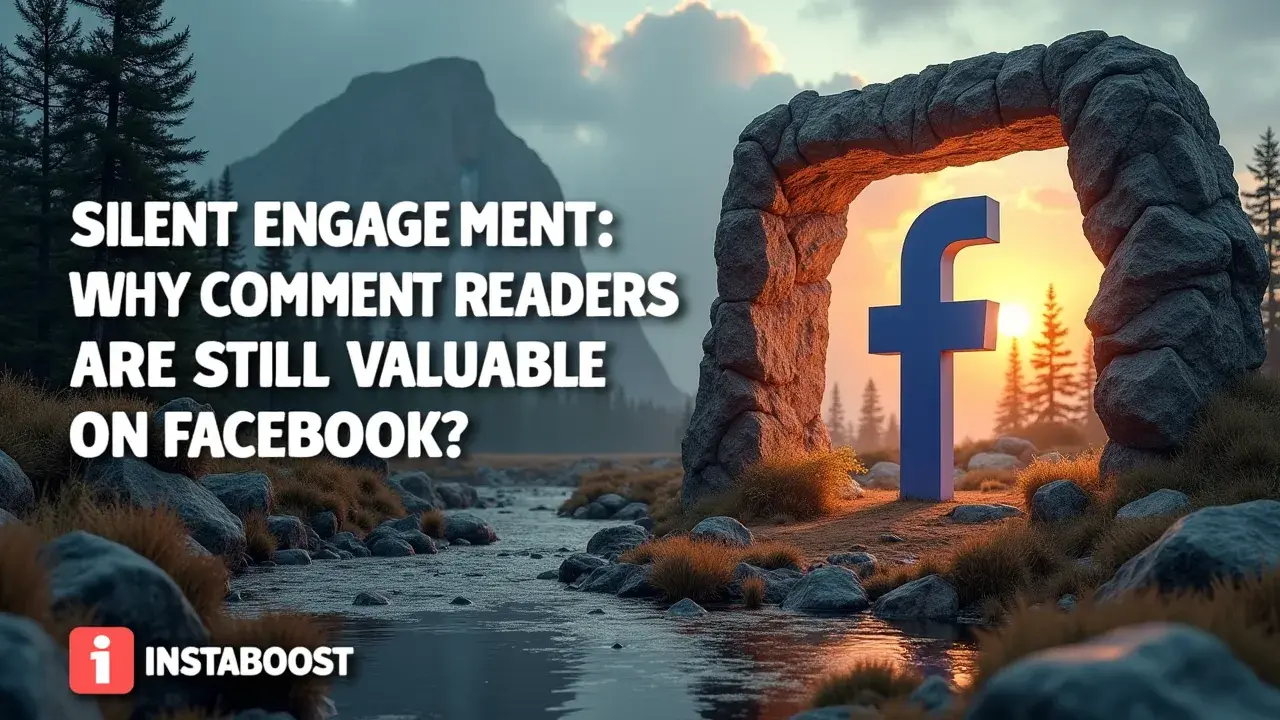Silent Engagement: Why Comment Readers Are Still Valuable on Facebook?
Silent engagement contributes real value by amplifying visibility and shaping social conversations. Comment readers can drive algorithmic reach through dwell time and passive signals, even without posting. Their attention influences sentiment and topic momentum, helping content circulate to wider audiences. Designing posts that reward scanning, clarity, and relevance encourages these readers to linger and return, making quiet participation a measurable asset when evaluating impact and fit.
The Hidden Pulse of Facebook Conversations
When you look at a busy Facebook post with hundreds of comments, it’s easy to notice the people who jump in and share their thoughts. But there’s a much bigger group you don’t really see: the ones who read everything, maybe scroll through the replies, and quietly move on. It’s tempting to assume these people aren’t that interested, but that misses a lot.
Even if they never type anything, they’re still taking things in – sometimes they’ll share a post in a private message, save it for later, or bring it up in conversation offline. The simple act of clicking “like,” following a page, or sending something to a friend can help stories and ideas get around more than you’d think.
There’s this whole side of Facebook promotion essentials that happens quietly, almost invisibly, while most of the attention goes to the loudest voices. People running Facebook pages or trying to get their message out often focus on the folks who leave visible reactions, but there’s so much going on that doesn’t show up in public.
Tools like INSTABOOST are starting to pay attention to these quiet signals – what people share, which links get passed along, and where posts end up. When you think about it, most of the movement happens out of sight, and a lot can spread from those who never say a word.
There’s this whole side of Facebook promotion essentials that happens quietly, almost invisibly, while most of the attention goes to the loudest voices. People running Facebook pages or trying to get their message out often focus on the folks who leave visible reactions, but there’s so much going on that doesn’t show up in public.
Tools like INSTABOOST are starting to pay attention to these quiet signals – what people share, which links get passed along, and where posts end up. When you think about it, most of the movement happens out of sight, and a lot can spread from those who never say a word.

Quiet Engagement, Real Influence
The best advice I ever got was actually pretty basic: “Slow down.” At first, I brushed it off, but over time, I found out how much it mattered, especially with things like Facebook. It’s easy to focus on the people who leave comments or quickly react, but there’s a whole group who never type a word. They’re still there, reading through the posts, sometimes sharing screenshots with friends or bringing it up in person later.
When I worked in marketing, I noticed the numbers everyone tracked were always the obvious ones – likes, comments, shares – because they’re simple to count. But when you look closer, you see all these “invisible” folks who keep up with everything and influence what gets talked about, even if it’s not obvious at first. Facebook’s own system pays attention to them too; things like how long someone sits with a post, or how much they scroll, actually help push things out to more people.
Companies like INSTABOOST have started to pay attention to these quieter signals – views, time spent, even the ways people move around a page – because there’s more going on than what you see.
Companies like INSTABOOST have started to pay attention to these quieter signals – views, time spent, even the ways people move around a page – because there’s more going on than what you see.
It’s funny how often people wonder how to get more profile engagement and forget that so much of it comes from people you barely notice. Once you notice that, it changes how you think about who’s really paying attention. Ignoring those silent readers means missing out on a lot of what’s actually happening. So, if you’re thinking about moving your Facebook group over to a newsletter or something else, try to remember that the people who rarely speak up are sometimes the ones who are following most closely. Not everyone is loud about what matters to them.
Practical Moves: Turning Silent Comment Readers Into a Real Asset
When it comes to Facebook, it’s usually better to keep things simple than to overcomplicate them. I’ve noticed that the people you never hear from – the ones who don’t like or comment – are often paying closer attention than you think. If a post gets a lot of views or people linger on it for a while, that’s real engagement, even if nobody says anything out loud.
So there’s a lot to be said for making your posts easy to read and easy to share. If you load everything up with too many details or ask people to do too much, most will just keep scrolling, especially the folks you most want to reach. I try to stick with one clear point in each post, add a photo or something visual, and sometimes include a question or a quick poll so people can take part without any pressure. It’s funny how a simple tweak – like figuring out what might increase likes on Facebook comments – can quietly change the way people interact, even if they don’t say much. It’s also worth watching which posts get shared or lead to more private messages or clicks – those are the quieter signs that people are interested.
If you’re running a brand page like INSTABOOST, you might ask people to share your post or invite them to sign up for a newsletter if they want more info. That way, the people who usually stay in the background can still feel included, without needing to speak up in public. Paying attention to this kind of silent engagement can make a difference, even if it feels small. Making things simpler doesn’t mean leaving out what matters; it’s more about making space for everyone, even the ones who don’t say much, to be a part of what you’re building. Sometimes, that’s where things start to shift in ways you didn’t quite expect.















